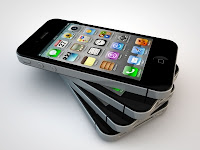Using a q-tip or cotton swab to clean the wax out of the ear canal actually pushes it deeper into the ear canal where it is not intended to be. This can cause the ear wax to accumulate and harden. As it compacts together, it creates a "stuffy" sensation in the ear and obstructs the pathway noise travels to reach the hearing organ of the ear. This leads to conductive hearing loss. Conductive hearing loss is not permanent and will go away once the ear wax has been removed from the ear canal. Also, if ear wax gets pushed up against the ear drum, it can cause the ear to ring (tinnitus). The tinnitus will usually go away once the ear wax is removed. For those who wear hearing aids, wax build up can cause hearing aids to feedback or whistle.
When ear wax becomes visible, the best way to clean it out is to use a warm, damp washcloth and remove it. Do not stick anything in your ear that will push the wax deeper into the ear canal and cause it to accumulate. Ear candling is also not advised as this practice is considered unsafe.
For more information, read this helpful article.
Image courtesy of freedigitalphotos.net










